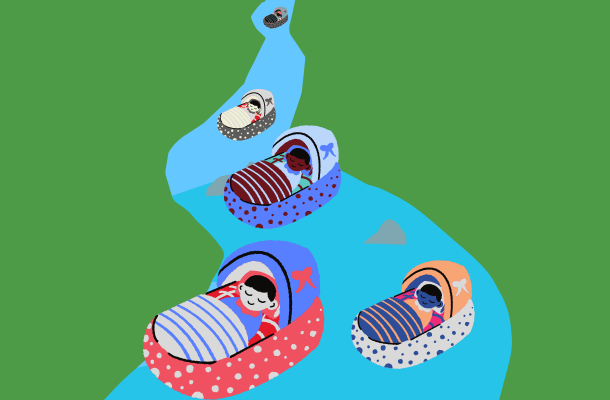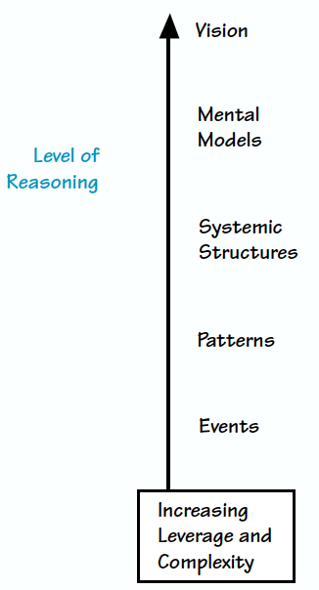This article is part of a larger series of On Our Minds, the fourth in a series examining more equitable practices, reflects openly and self-critically on the underlying processes, assumptions, and structures driving inequity and what would make the arts and culture sector more equitable.
Terms such as “systemic bias” and “structural change” are widely used in the philanthropic sector but perhaps not as well understood as they ought to be. When does a particular funding intervention or policy initiative have the potential to affect “structural change?” When is a problem “systemic” and how does that make it different from other problems? The definitions and criteria used to make such determinations seem far from clear, at least in the ways I’ve seen those terms deployed conversationally.

To better understand what systems are, what structures underly their functioning, and how they can be changed, I recently chatted with John Shibley, systems expert, and regular WolfBrown collaborator. What follows is a summary of my key takeaways from that conversation.
What is Systems Thinking?
Stating it in layperson’s terms, John Shibley defines a system as “a bunch of things connected to each other [in a way] that when one changes, they all change.”
John notes that “we tend to think of collective behavior as simply the accumulation of all a lot of individual decisions, but that’s not really the case. I like to say that the whole is not only greater than the sum of its parts – it’s stranger too. Sometimes, when you aggregate all those individual decisions, you end up with a result that no one wanted.
Climate change is really a great example of this. No one set out to heat up the atmosphere, yet we did and continue to do so. There are underlying dynamics that are often unseen.”
In a recent article, John elaborates on those underlying dynamics—the “things,” “connections,” and “delays” that together make up the “structure” of a system—and emphasizes that if there’s one golden rule in systemic thinking, it’s that “structure drives behavior.” (You can read more of his writing here.)
Why Think About Systems?
In reflecting on why it’s important to think about creating change at the systemic level, John shares a vivid story that is used in classes for social workers:
A group of social workers come down to the river. There are babies floating down the river in little baskets. The social workers shout, “Oh, my God, there are babies in the river!” They go down the bank and into the water and begin to pull the babies out.
Then they look upstream and see these other babies coming and they yell, “Come help! We’ve got babies coming down the river!” So, other social workers come and get in the water, and they all start pulling these babies to shore.
Next, a couple of social workers come, look at the river. Then, they turn and begin to walk upstream. The rest of the social workers ask them “Where are you going?” And they say, “While you get the babies out of the river, we’re gonna figure out how these babies are getting in the river in the first place.”

John notes that we tend to gravitate toward alleviating the symptoms. We put all our resources into getting the babies out of the river. However, the systemic approach is to try to understand what’s causing the problem and change the underlying structure causing the problem in the first place. As he puts it, “What you try to do with a systems problem is not solve it but dissolve it.” You ask how one could change the system so the problem disappears.
Quantitative and Qualitative Approaches to Systems Dynamics
In describing systems dynamics as a field of inquiry, he explains that there’s a technical side of systems dynamics research in which people build mathematical models of how systems behave. For instance, they might ask, “What happens to the other species in an ecosystem if the number of wolves increases?” The ecosystem adapts in specific ways that can be modeled mathematically. There’s a recipe for building models like that, and that’s a common approach at a scholarly level in the field.
But there’s also a more qualitative application. That’s where John’s work has focused. “The point of my work is to add a systemic sensibility to discussions,” he says. In that type of work, people apply general knowledge of systems’ behavior to their reasoning about possible solutions. In John’s consulting, he brings systems vocabulary and reasoning to groups working on particular problems to develop ideas about how the system can be changed to produce more desirable outcomes.
Systems Archetypes
When you start thinking about systems this way, you recognize familiar patterns.
For instance, as I was sharing findings from our recent analysis of the distribution of arts funding in California with John, he immediately recognized a “systems archetype” – a pattern that appears repeatedly in various settings.

Regarding the distribution of arts funding in California, the archetype is “success to the successful.” In this archetype, several entities are competing for a common resource. Obtaining that resource increases that organizations capacity to compete more effectively for it. The ones that get more of the resource get better at acquiring that resource. Over time, fewer and fewer of these entities will get more and more of the resource at the expense of other entities that get less. Successful organizations will continue to be successful, and organizations that fail will continue to fail.
Increasing your leverage
The diagram below illustrates how you can look at individual events, patterns, systemic structures, mental models, or a larger vision.
Levels of reasoning

The further up you go in the diagram, the more leverage your intervention will have. It’s much more powerful when a vision changes than when an event does, but it’s much easier to change an event. Going back to the babies in the river, saving a baby is an event – easy to do with an immediate emotional reward, and it does nothing to prevent more babies in the river. You’ve changed the outcome of that event, but the problem persists.
At the opposite end of the spectrum, if you want to change mental models or vision, you’re operating at a very leveraged level. John notes, “If you can change an individual or organization’s beliefs, that’s a much more leveraged intervention. But it’s much harder. The farther up the diagram you go, the more leverage you get, and the harder the change is.”
Developing new visions, mental models, and system structures is the most challenging task because it requires patience and creativity. According to John, it doesn’t happen often. “Most solutions that most people implement are just different versions of things they’ve already done, even if they have a new vision. They don’t take the time to explore what new things they would have to believe for their vision to happen, and they rarely think about how to reengineer their structures – like budgeting, decision making or governance – to be consistent with the new thing they are trying to create.”
Focusing on systemic structures
John is quick to point out that there’s no value judgment implied in the levels of reasoning diagram or where you intervene. Solutions that introduce new visions aren’t inherently better than ones that operate at the event level. You need to match the way you intervene to the problem you are trying to solve.
“I love it when we can fix something at the event level,” he says. “It’s simple and usually quick. I like those a lot!” The problem is when we try to fix a systemic issue by working at an event level.” In other words, pulling a baby from the river saves that baby, but it does nothing to prevent more babies from floating down to you.
John gravitates towards analyzing systemic structures and developing solutions at that level and explains:
My own experience trying to make change is that working with systemic structures is a nice middle ground. That’s because systemic structures are the first thing you can’t actually see on this diagram. You can see the events and patterns, but you have to assume the structures or postulate about them, given what you see. It is a point of leverage, but it’s close to the data.
We hope to continue this dialogue with John. We hope you’ll agree that systems thinking holds potential as an analytical tool for uncovering structures that perpetuate bias at all levels of the arts ecosystem.
More about John Shibley
John Shibley has over thirty-five years of experience leading complex organizational improvement efforts in a variety of industries, sectors and settings. His practice focuses on the intersection of strategy, innovation and organizational learning. He is a flexible and imaginative consultant with a history of working successfully with a variety of clients and for moving nimbly between theory and practice, reflection and decision-making. For six years John was a lead consultant in the Doris Duke Innovation Lab for the Performing Arts, a year-long intervention to incubate strategic artistic innovations and deliver them to the public, a program John helped develop during his tenure as EmcArts’ Director of Organizational Learning. John’s Innovation Lab clients have included the Apollo Theatre, Oregon Shakespeare Festival, the Liz Lerman Dance Exchange, The Nelson-Atkins Museum, The Civilians, The International Contemporary Ensemble, and Urban Bush Women, among others.
More about John Carnwath
At WolfBrown, John Carnwath works primarily on arts funding, evaluation, and cultural policy. Carnwath recently developed a long-term plan to build capacity for evaluation and impact assessment among State Humanities Councils. It was funded by the National Endowment for the Humanities. He was an integral part of the team that developed a Qualitative Impact Framework for the Canada Council for the Arts. Carnwath is currently conducting a field scan of the arts ecosystem in California. It combines statistical analysis of the best available data on arts nonprofits with consultations in local communitiesto identify sources of inequity in the distribution of private and public arts funding across the state.

This is piece is part of our series on systemic inequities in the arts. You can read other posts here:
- On Our Minds – Audio Edition: Kacie Willis interviews two team members (Marc Bamuthi Joseph and Trés McMichael) of the Social Impact program at the Kennedy Center.
- Arts Funding Inequities in California: John Carnwath summarizes research with the California Arts Council.
